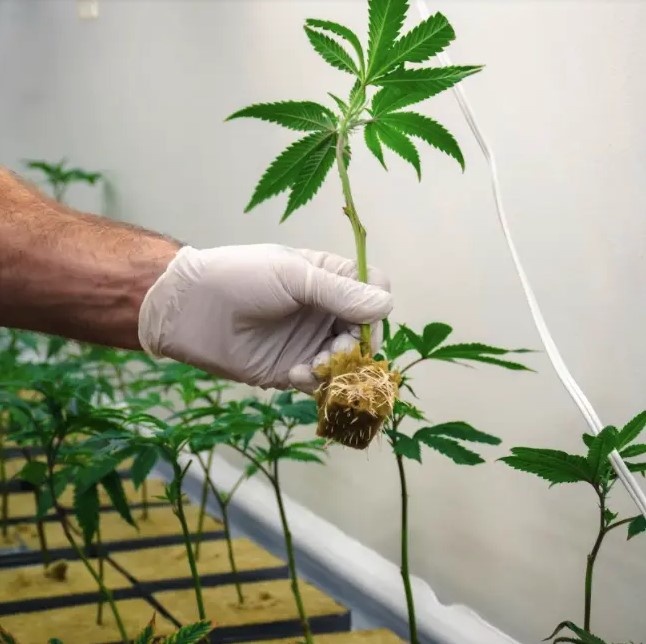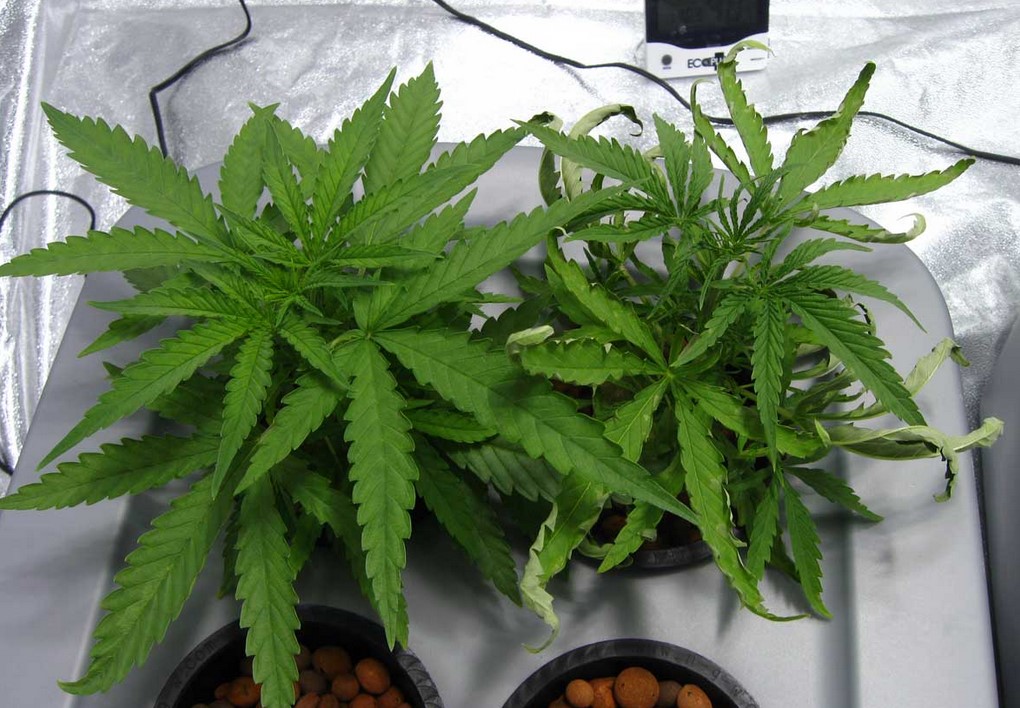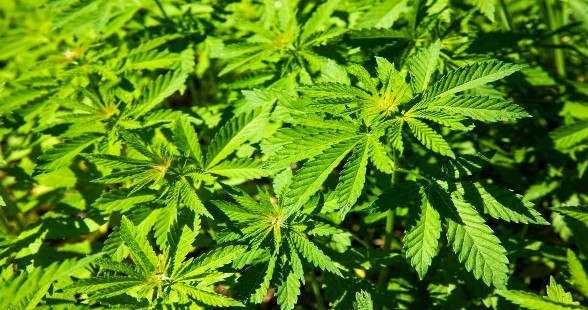Uncategorized
Dissolved Oxygen for Weed Plants
If you want a healthier and quicker-growing cannabis crop, increase the amount of dissolved oxygen in your plant’s water. Though molecular oxygen does not maintain well in water past regular values, with some easy techniques, you can change that.
Oxygen saturation levels in the water are known as dissolved oxygen (DO). In layman’s terms, the more oxygenated the water is, the happier your plant’s roots will be.
You might be wondering how there could possibly be more oxygen molecules in the water than oxygen atoms- especially when you consider that each water molecule can only have one oxygen atom. The answer lies in the chemical structure of H₂O: for every two hydrogen atoms, there is one oxygen atom.
Consider it like chocolate milk. You combine chocolate into milk, shake, and voila—an immediate and wonderful dessert is born. Milk is still milk, even if it includes chocolate, but they blend well together. Water and molecular oxygen (O2) operate in the same way as chocolate milk does –
Water flowing and tumbling about in oceans, rivers, ponds, rain, and even municipal water systems is healthy water because air is shaken into the water and molecular oxygen is trapped inside—just like our chocolate powder in milk.
In fact, stagnant water often turns “bad”. It is not the water that has gone bad, but rather the depletion of molecular oxygen to a point where conditions are perfect for nefarious anaerobic bacteria.
This is why you were advised as a youngster not to drink water from a pond.
But Why Do I Need Extra Oxygen In Water?
To develop healthy cannabis plants, you don’t need extra oxygen in water. However, if you want to cultivate healthier, bigger, and more productive plants, it’s definitely worth considering.
The first line of defense against anaerobic bacteria, which cause root rot, is dissolved oxygen. It also encourages rapid root growth by boosting the density of fine root hairs, which are in fact responsible for water uptake. Water intake alone uses a significant quantity of plant energy, as it requires oxygen.
The higher availability of oxygen atoms improves nutrient absorption. Roots that are deprived of oxygen must substitute with other chemicals and generate ethylene, which causes cell damage and raises the risk of overall illness.
If your roots are oxygen-deprived, this can lead to calcium deficiencies. Some might become confused why adding cal-mag products does little to nothing. So the real question is, why wouldn’t you want to add extra oxygen?

How to Add Dissolved Oxygen to Your Growing System
Adding dissolved oxygen to water is a common gardening technique to encourage the growth of helpful aerobic microbes, prevent the spread of disease-causing anaerobic microbes, and improve root health. But how do horticulturalists go about adding oxygen to water? There are several ways increase the amount of dissolved oxygen in your plant’s reservoir or holding tank, from circulating pumps to ozone gas. Discover some of the most effective methods below on how to oxygenate water for weed plants.
Fluming
Fluming is an efficient approach to oxygenate your water. While air stones at the bottom of a hydroponic reservoir create bubbles, fluming increases the amount of dissolved oxygen by creating a ruckus on the surface. Growers may decrease the temperature of water (which increases its oxygen-holding capacity) by using a water chiller and a recirculating pump. Water is pumped out of the reservoir through pipes and back into the reservoir above the water’s surface after it has been removed from the reservoir. When the water is pumped and breaks through the surface, it allows oxygen to enter the solution. While some growers report better results with fluming compared to using air stones, these claims are subjective—no data exists currently that proves this method of growing weed produces a higher yield.
Harness H₂O₂
Now that we’ve gone over H₂O, let’s take a look at H₂O₂. If you haven’t guessed by its string of letters and numbers, this molecule has two hydrogen atoms and two oxygen atoms—equal amounts of each. This is the formula for hydrogen peroxide, a mild antiseptic often used to cleanse everything from minor wounds to growing equipment like hydroponic systems.
The oxygen atom that joined to the molecule with a looser bond than the other two is easily removed, causing H2O2 to break down. Two water molecules (H20) and one oxygen molecule (O2) are produced during this transformation. When you add H20 to your reservoir, it provides more oxygen than water alone, but you must use the supplement correctly.
The extra oxygen atom in hydrogen peroxide is unstable, so manufacturers add stabilizers to their formulas. Stabilizers make the product better, but they’re not safe for humans or animals to consume. Growers can get food-grade hydrogen peroxide, but it’s very potent; a 30–50% concentration is required to forego using stabilizers. To use hydrogen peroxide in your reservoir safely, you need to dilute it with water to 3%.
To make your H2O compatible with your hydro setup, you may use a simple calculation. Let’s suppose you have a 40-liter reservoir. You’ll need to add 1ml of 3% H2O per liter of water (40ml in total), but the concentration is 50%. To address this, take the amount you require (3%), multiply it by the volume (40 ml), and divide the result by the solution’s strength (50%). The formula looks as follows:
(3 × 40) ÷ 50 = 2.4ml 50% H₂O₂
Subtract the sum from the original volume required to get an accurate dilution. The equation is as follows:
40ml − 2.4ml = 37.6ml water
You may also dilute your H20 and water, which will ease the mixing process. You can substitute the formula in the sections above depending on your reservoir size and the strength of your original hydrogen peroxide solution.
Finally, you must know how to utilize it. When your hydroponic system requires H2O2, apply it. Perhaps you’re detecting anaerobic symptoms (odors and rotted roots), or you’ve measured the dissolved oxygen content of your water and don’t like the results; concentrations of 5 mg/l and above are suggested. Start out by adding half of the dosage to avoid shocking your plants, then increase the amount in intervals until you reach 5 mg/l.
Electrolysis
Electrolysis creates H₂ and O₂ gases by introducing electric potentials through water. The process happens between a submerged positive anode and a negative cathode, which then creates electrical current. Some of these newly formed gases create large bubbles and rise to the surface immediately, while others remain in solution as nanobubbles for extended periods of time.
Electrolysis hydroponics promotes the amount of dissolved oxygen in water. Nutrient ions, on the other hand, enable the process to occur and these chemicals undergo reactions during electrolysis. As a result, hydroponic cannabis growers should perform this method in an external body of water containing salts such as sodium chloride. The oxygenated water may then be fed into the reservoir without altering the nutrient profile of the internal solution. Growers must also use electrodes made from non-reactive metals like titanium that won’t corrode.
Beneficial effects on plant growth have been documented when increasing dissolved oxygen levels by electrolysis. Researchers found that the technique increased growth rates of hydroponic water spinach plants, though no studies specifically focus on cannabis plants.
Ozone
Plain old oxygen diatomic gas, which has a chemical formula of O₂ and contains two oxygen atoms, is composed of two separate oxygen atoms. In contrast, ozone (O₃) has three oxygen atoms. Furthermore, it’s a very unstable molecule that reverts back to O₂ rapidly, resulting in the third atom being located in its immediate vicinity. That said, dissolved oxygen saturation levels are extremely high in solutions with ozone (O2).
The bottom line: Ozone is a good technique for oxygenating water for plants. ozone generators may be used to oxygenate water in an external holding tank before transferring the saturated water into the main reservoir.

Keep Your Hydroponic System Clean
Clean water also promotes optimal oxygenation. Thoroughly cleaning your equipment between crops and any accessible parts during cultivation will help to minimize the growth of organisms that use up dissolved oxygen. Algae, for example, split water molecules in the presence of light, producing oxygen, but they begin to consume oxygen from the environment when it is dark. By scrubbing your equipment with a 3% hydrogen peroxide solution, you will be able to eliminate competitors. Furthermore, using opaque containers will diminish the amount of light that some of them need in order to prosper. It’s worth noting that some of the methods mentioned previously, like H₂O₂ and ozone, also work wonders in getting rid of pesky microbes.
Temperature Is Key
As stated earlier, the colder the water, the more effective it is—but at 16°C and below, roots will decrease metabolic activity. Ideally, 18°C +/- 1°C is considered to be optimal. Higher than 23°C starts entering root-rot territory. Automatic reservoirs are not typically used in pure organic cannabis farming, so what is the universal solution?
It is best to have a reservoir with only pure nutrients and a chiller. This will addition to a strong recirculation pump creates more dissolved oxygen. Your plants need this fresh mixed cocktail, it will invigorate them. The grow room temperature may heat the water over time which decreases molecular oxygen levels; but by then the DO would have completed its job successfully.
Dissolved oxygen is a small addition to your garden that can have significant benefits. You can deter bad bacteria, encourage faster and more robust root growth, promote higher water and nutrient uptake, and overall create a happier plant.
Make Oxygenated Water for Plants
If you’re looking to take your hydroponic cannabis production to new heights, there are several methods available to you. Techniques like fluming and adding H₂O₂to your reservoir are easy enough for any grower to try. If you’re more of a serious hobbyist who enjoys experimenting, why not give electrolysis or ozone a shot? These methodscan help increase the dissolved oxygen levels in your growth medium, giving your plants the boost they need to thrive.


